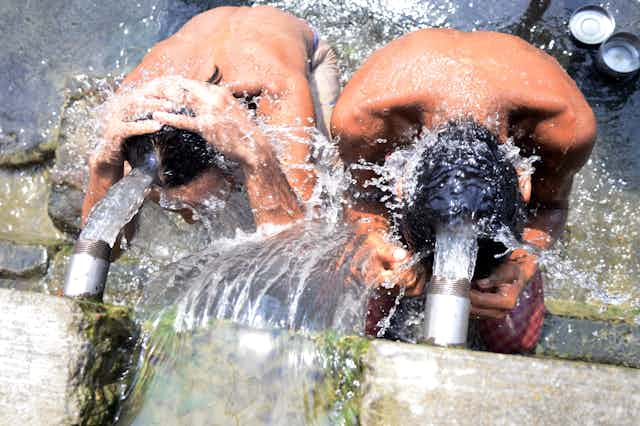Cast your eyes over the statistics in a new report I helped author on staying cool in a warming climate and the urgency becomes clear: 1 billion people, mostly in Africa and Asia, are at high risk from extreme heat because they lack access to cooling, while a further 2.9 billion only have intermittent access. As the climate crisis deepens, close to half of the world’s people have little defence against deadly heat.
Exposure to high temperatures is not just a health risk; research shows how excessive heat leads to children struggling in class, threatens women disproportionately (they often have less access to healthcare, are more likely to live in poverty and shoulder a heavier burden when it comes to domestic labour) and slashes working hours, particularly among outdoor workers. All of these effects make sustainable development harder.
At the same time, energy demand from cooling – by those who can afford it – could more than double by 2050. This demand, when met with electricity generated by burning fossil fuels, increases emissions in turn, exacerbating climate change.
It’s encouraging then that halfway through the COP28 climate talks in Dubai, 63 countries signed a pledge to cut their emissions from cooling systems by 68% by 2050 (compared to 2022 levels).
This is the first international commitment to target emissions from air-conditioning and refrigeration for food and medicine. Signatories included several G20 countries, including the US and Canada, where nearly three-quarters of the potential for cutting cooling-related emissions by 2050 resides.
The pledge also asks for countries without adequate cooling access to receive provisions for sustainable means of staying cool. Our report highlights how countries that lack access to adequate cooling need help to meet the upfront costs of cooling equipment and energy grid improvements, among other measures.

My research focuses on cooling and sustainable development, so the pledge felt like an important moment. Cooling is now firmly on the global agenda. But the hard work must begin to ensure everyone can stay cool without further heating the planet.
As the report explains, there are three ways to do this: expand access to passive cooling methods, raise energy efficiency standards and phase out climate-warming refrigerants.
Policies supporting these three goals are urgently needed to accelerate the transition from fossil-based cooling. Many countries have cooling policies, such as minimum energy standards, but few are integrated into climate and development plans.
People who live in cooler climates are not off the hook either. Research by my colleagues and I has shown how countries like the UK, Norway and Switzerland face a tremendous challenge in adapting to higher temperatures because their towns and cities are designed to keep heat in.
A three-step solution
Passive cooling refers to means of keeping cool that do not consume energy from electricity. These range from simple measures like planting trees outside buildings to absorb sunlight, to architectural designs that allow natural ventilation, shading and cool spaces.
To ensure these measures are taken up, countries should embed passive cooling measures in building and energy regulations to reduce cooling demand in buildings and in the “cold chain” (the temperature-controlled supply chain that is vital to the global supply of food and medicines).
If successful, passive cooling measures could curb the demand for cooling by 24% by 2050, saving US$3 trillion (£2.4 trillion) and negating greenhouse gas emissions equivalent to 1.3 billion tons of CO₂.
Next should come higher energy efficiency standards for cooling equipment such as air conditioners. This would not require new technology, but rather, improving existing ones with better labelling systems and regularly updated minimum performance standards across countries.
Get this right and we could triple the global average efficiency of cooling equipment in 2050 from today’s levels while significantly lowering household energy bills.
Finally, the world must cut back on hydrofluorocarbons, or HFCs. These gases can be found in most air conditioners and refrigerators. Despite their relatively short lifespan which is usually less than 20 years, HFCs have an outsized impact on warming the climate that is many times greater than the equivalent amount of CO₂.

The world committed to phasing out these gases in 2016 through the Kigali amendment to the Montreal protocol. We must go further by encouraging the rapid uptake of better technologies and refrigerants with lower global warming potential.
Extreme heat is rising in its intensity, frequency and duration, making cooling integral to the wellbeing of people in every corner of the world. Simple measures can quickly reduce our impact on the climate (and reduce the projected 2050 emissions from business-as-usual cooling by over 60%), while also reaping multiple socio-economic benefits.
But to realise this optimistic future, governments across the world must now demonstrate their commitment with action.

Don’t have time to read about climate change as much as you’d like?
Get a weekly roundup in your inbox instead. Every Wednesday, The Conversation’s environment editor writes Imagine, a short email that goes a little deeper into just one climate issue. Join the 20,000+ readers who’ve subscribed so far.

